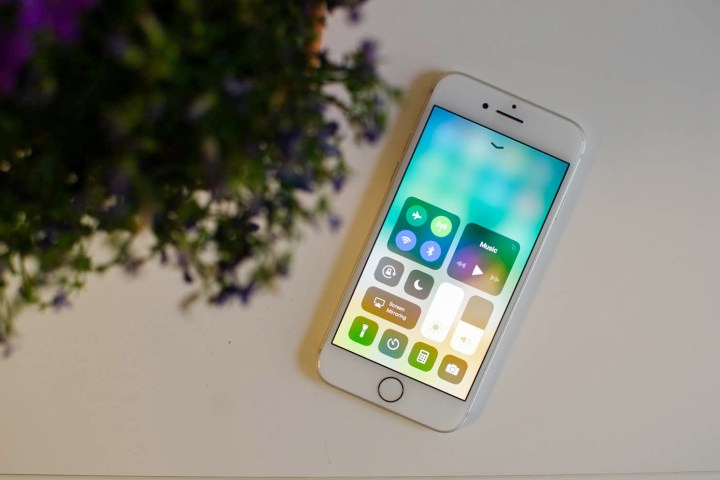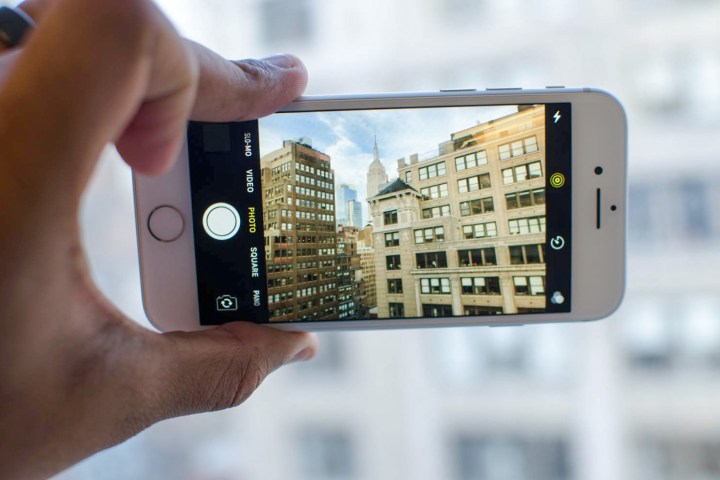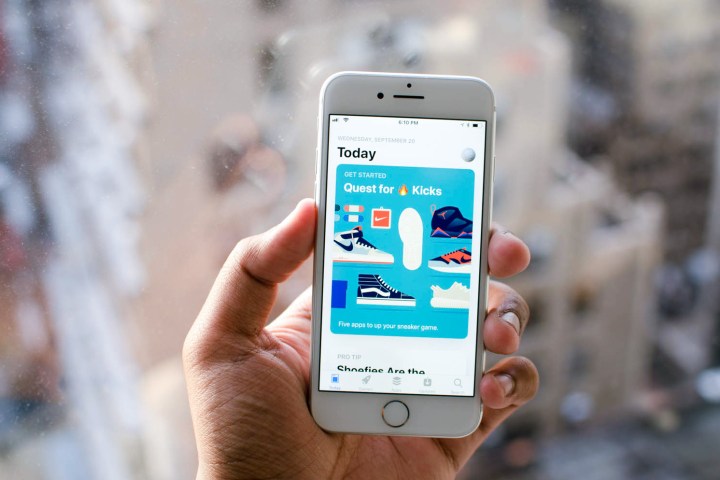
Apple’s annual iPhone update always generates some excitement, but the iPhone 8 was overshadowed by the iPhone X. Of course, not everyone will want to upgrade to the new design. Maybe a $1,000 phone is a bit much, or you prefer the more manageable size of the iPhone 8. It’s clear from the iPhone XS, XS Max, and XR that the home button is gone for good and the iPhone 8 is the last of its kind.
At first glance, the iPhone 8 doesn’t look any different than the iPhone 7, but if you dig in beneath the Retina display, you’ll find some important distinctions. If you already have the iPhone 7, however, the question remains: Is it worth upgrading? Or if you’re looking to buy one of these iPhones today, which should you go for? Let’s find out how the two devices measure up.
Specs
|
Apple iPhone 8 |
Apple iPhone 7 |
|
| Size | 5.45 x 2.65 x 0.29 inches (138.4 x 67.3 x 7.3 mm) | 5.44 × 2.64 × 0.28 inches (138.3 × 67.1 × 7.1 mm) |
| Weight | 5.22 ounces (148 grams) | 4.87 ounces (138 grams) |
| Screen | 4.7-inch Retina HD IPS LCD | 4.7-inch Retina HD LED-backlit widescreen |
| Resolution | 1334 × 750 pixels | 1334 × 750 pixels |
| Operating system | iOS 11 | iOS 10 (Upgradable to iOS 11) |
| Storage | 64GB or 256GB | 32GB, 128GB, or 256GB |
| MicroSD card slot | No | No |
| NFC support | Yes (Apple Pay only) | Yes (Apple Pay only) |
| Processor | A11 Bionic chip with 64-bit architecture, M11 motion coprocessor | Apple A10 Fusion with 64-bit architecture, M10 motion coprocessor |
| RAM | 2GB | 2GB |
| Connectivity | 4G LTE, GSM, CDMA, HSPA+, 802.11ac/b/g/n/ac Wi-Fi | 4G LTE, GSM, CDMA, HSPA+, 802.11ac/b/g/n/ac Wi-Fi |
| Camera | 12MP rear with OIS, 7MP front | 12MP rear with OIS, 7MP front |
| Video | 4K at 60 fps, 1080p at 240 fps, | 4K at 30 fps, 1080p at 30 or 60 fps, 720p at 240 fps |
| Bluetooth | Yes, version 5 | Yes, version 4.2 |
| Fingerprint sensor | Yes | Yes |
| Other sensors | Barometer, gyro, accelerometer, proximity sensor, compass, ambient light sensor | Barometer, 3-axis gyro, accelerometer, proximity sensor, ambient light sensor |
| Water resistant | Yes, IP67 | Yes, IP67 |
| Battery | 1,821mAh | 1,960mAh |
| Charger | Lightning | Lightning |
| Quick charging | Yes | No |
| Wireless charging | Yes | No |
| Marketplace | Apple App Store | Apple App Store |
| Color offerings | Gold, Silver, Space Grey | Rose Gold, Gold, Silver, Black, Jet Black |
| Availability | AT&T, Verizon, Sprint, T-Mobile | AT&T, Verizon, Sprint, T-Mobile |
| Price | $600 | $450 |
| DT review | 3.5 out of 5 stars | 3.5 out of 5 stars |
Performance, battery life, and charging
The biggest upgrade in the iPhone 8 is the A11 Bionic chip. It offers a 30 percent efficiency boost and a 50 percent performance boost when compared to the iPhone 7’s A10 chip according to Apple. That’s a significant upgrade, though we don’t think you’ll feel the difference very often, because we’ve never found the iPhone 7 lacking in terms of processing power. It is discernibly, very slightly faster, but it’s only when using more demanding apps and games, especially augmented reality apps, that you’ll notice.
In terms of RAM, Apple rarely lists it as a spec, but we know the two phones both pack 2GB, which is adequate for running iOS. There’s still a debate about how much RAM a smartphone needs, but it’s certainly not a differentiator here. One welcome improvement for the base model of the iPhone 8 is the storage capacity. It comes in 64GB and 256GB configurations. The iPhone 7 comes with 32GB, 128GB, or 256GB.
It’s just as well that the newest A11 chip is supposed to be 30 percent more power efficient than its predecessor, because Apple has reduced the battery size in the iPhone 8. It sports a 1,821mAh battery, compared to the 1,960mAh battery in the iPhone 7. Apple claims that it should last just about as long as the battery found in the iPhone 7, but we have found that it actually lasts a little longer. The iPhone 8 has a slightly better battery life than its predecessor, but there isn’t much in it, and both will require daily charging for most people.
There are a couple of other notable improvements here. First, the iPhone 8 supports fast-charging, meaning you can charge the battery up 50 percent in just 30 minutes. That’s a major boost over the iPhone 7, though you will need to buy a fast-charging kit separately as it’s not supplied in the box. The iPhone 8 also supports wireless charging and will work with any wireless charging pad that supports the Qi standard. This is the double benefit of having a glass back.
Winner: iPhone 8
Design and durability

You’re going to have to look very closely to see any differences in the design of these two phones. The most obvious change is that Apple has switched to a glass back for the iPhone 8. It is also 10 grams heavier and fractionally bigger in all directions, but the dimensions are close enough that iPhone 7 cases will still fit the iPhone 8.
When it comes to durability, both phones are IP67-rated, so they can take a dunk in up to a meter of water for 30 minutes and emerge unscathed. Apple says the glass backing on the iPhone 8 is durable, but we’d imagine it will still be more likely to break than the metal back found on the iPhone 7.
The classier look of the glass back is enough for the iPhone 8 to claim a slim win here.
Winner: iPhone 8
Display

At 4.7 inches, the displays in the iPhone 7 and 8 are among the smallest around, but we’re still a little disappointed that Apple stuck with a 1334 x 750-pixel resolution. Both phones support 3D Touch and a wide color gamut, the only change with the iPhone 8 is that it has a True Tone display, which will adjust to your environment for the ideal color tone.
Winner: iPhone 8
Camera

On paper, there’s little difference between the cameras on the iPhone 8 and the cameras on the iPhone 7. We’re still talking about a 12-megapixel main shooter, and a 7-megapixel front-facing camera. The main cameras here are overshadowed by the dual-lens offerings in the 7 Plus, 8 Plus, and iPhone X.
Apple says the iPhone 8 camera is slightly better than the iPhone 7 camera, given it sports a larger and faster sensor, one that’s capable of capturing more light. The iPhone 8 is also able to shoot 4K video at 60 frames per second, while the iPhone 7 is limited to 30 fps. It wins in slow-motion as well, as you can now capture video at 240 fps in crisp 1080p.
Winner: iPhone 8
Software and updates

The iPhone 8 shipped with iOS 11, and has since been updated to iOS 12. However, iPhone 7 owners can upgrade to Apple’s latest platform and receive all the same benefits. There isn’t really anything to divide these two phones in the software department. We expect both phones to continue to get iOS updates for a few years to come, though the iPhone 8 will likely be updated for slightly longer than the iPhone 7.
Winner: iPhone 8
Price and availability
The 64GB version of the iPhone 8 costs $600, and the 256GB model will run you $750. You can also currently buy it on-contract through each of the major carriers in the U.S. — check out our iPhone 8 buying guide for all the details.
Apple always drops the price of older iPhones when a new one comes along, and there have been two price drops for the iPhone 7 since the iPhone 8 came out. The 32GB version of the iPhone 7 now starts at $450, and you can get the 128GB version for $550. Once again, it’s available through all the major U.S. carriers on contract deals. You can also buy both phones from Apple SIM-free and unlocked.
If you’re looking to save a few bucks, the iPhone 7 looks like a good deal and even the 128GB version, which touts double the storage capacity, is cheaper than the base model of the iPhone 8.
Overall winner: iPhone 8
We know that all you iPhone 7 owners don’t want to hear this, but the iPhone 8 really isn’t enough of a jump to make it a worthwhile upgrade. The most notable improvement is the processor, and while it does offer faster performance, most people won’t feel much of a difference. The rest of the improvements are simply too minor to merit the extra expense.
If you’re currently shopping for a new iPhone and it boils down to these two, then we would certainly pick the iPhone 8, partly to future-proof and partly to get the speedier charging and support for wireless charging. If you want to experience the best Apple can do, however, you should be looking at the iPhone XS, or, if money is tight, the iPhone XR at $750.
Editors' Recommendations
- 10 iPhone productivity apps you need to download right now
- Best phone deals: Save on the iPhone, Galaxy Z Fold 5, and more
- When will Apple release iOS 18? Here’s what we know
- The best iPhone 15 Pro cases in 2024: our 21 favorites
- This is our best look yet at the iPhone 16’s big design changes


